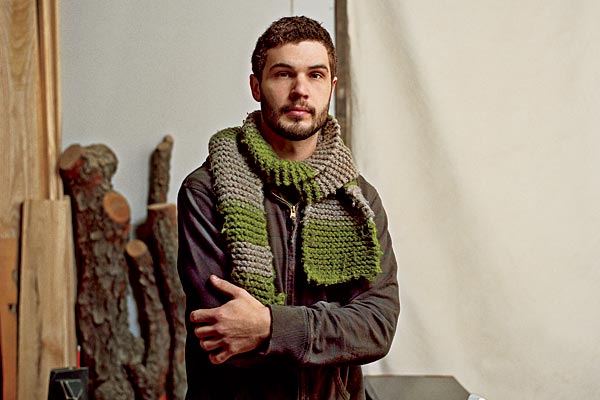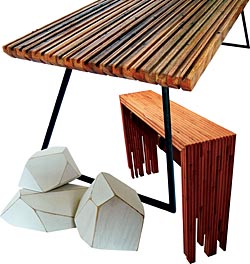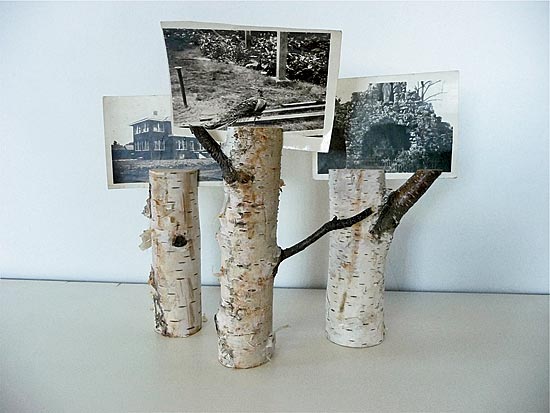
In a world of mass-produced everything, Aaron Pahmier, owner of Green Sawn, a sustainable furniture and woodworking shop, is the type of guy you just want to hug for his utopian take on commerce. “Maybe I’m an idealist, but I like the idea of working with customers the way it was done a long time ago, when you’d go to the shoemaker and he’d make your shoes, and the baker would make your bread,” says the 26-year-old Indiana-born artisanal-baker-turned-furniture-maker, who, despite his nostalgic inclinations, is far from a grumpy old man.

Pahmier’s one-of-a-kind coffee table (above) and console (right) are made from red oak flooring reclaimed from a Chicago residential teardown; small faceted-wood rocks by Kindling (below) are $16 each at Post 27.
Pahmier moved here from Eugene, Oregon, in 2006 and assisted a master carpenter before striking out on his own with Green Sawn about a year and a half ago (the decision came to him during a soul-searching trip to France). He makes everything from custom cabinets to countertops to coffee tables out of reclaimed lumber; his rustic-modern designs are sold through eco-minded shops Post 27 (post27store.com) and Green Home Chicago (ghcdesigncenter.com).
Pahmier’s Northwest Side space is across the hall from the studio of Bladon Conner, whose unique repurposed and photo-covered furniture has been featured in our pages (he has recently started making his own pieces from wood and metal). The building, at 2612 W. Nelson St., is a mini version of 319 N. Albany Ave., a more established hub of furniture makers in Garfield Park. (Pahmier’s sister, a 29-year-old designer who partners with her brother in a wood accessories business called Kindling, also works in the Nelson space.) There’s definitely a collaborative spirit at play here. Trained as an architect, Conner came to furniture making from a more conceptual place and has taken lessons in cabinetry from Pahmier, who in turn has gleaned fundamentals of design from his neighbor.
Photograph: (Pahmier) James P. Morse

Kindling’s birch branches, each about three to six inches tall, are slit across their tops for an all-natural photo display; $30 for a set of five at etsy.com.
“Blaydon and I would have these Monday night sessions when we would stay up late and figure out design,” says Pahmier. “He encouraged me to study famous forms and figure out what it is about them that I really like.”
To that end, Pahmier took on George Nelson’s famous slat bench. He thought for a long time about qualities such as “the negative space atop a plane” that make it appealing to him, and considered what else could be done with it. Ultimately, he made a steel-based bench with a top of laminated salvaged floorboards (it, too, has negative spaces, due to the grooved nature of the boards). Conner took the concept in another direction, designing a form out of the same wood that “folds” down at the sides, instead of being supported by a metal base.
Pahmier is just starting to hit his stride as a designer, making it a good time to go to him with ideas. He has a gift not only for building, but also for discerning a customer’s vision and needs based on a few conversations. He attributes this sixth sense to his hands-on background as a carpenter and his love of reclaimed wood. “If you look at it long enough,” he says, “form comes out of it.”
CONTACT GREEN SAWN, 2612 W. NELSON ST., 773-516-8686; GREENSAWN.COM


